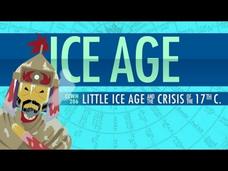SciShow
How to Live Forever? Be a Jellyfish
The turritopsis dohrnii, or immortal jellyfish, are tiny, with adults measuring only 0.18 inches tall and wide. The narrator of this short video explores the immortal jellyfish and the importance of their unique and amazing lives. These...
Veritasium
Why Are 96,000,000 Black Balls on This Reservoir?
A Los Angeles reservoir is the largest ball pit on Earth. Learn the problem and solution of the water treatment plant in LA in a Veritasium video lesson. An unexpected chemical reaction created an issue in the treatment of water, and the...
California Academy of Science
Think Before You Eat
Small changes in individual diets add up quickly, which is the theme of the ninth lesson in the 13-part Our Hungry Planet unit. Viewers watch a video to learn basic facts before reading a handout and discussing their own choices.
California Academy of Science
Desalination
Desalination requires around two gallons of sea water to make one gallon of fresh water—that's quite a ratio! Viewers consider the pros and cons of desalination as one option to providing fresh water. They learn about two different...
California Academy of Science
Vertical Farming
Half of crops from traditional farming never get harvested, while 90 percent of crops from vertical farming go into the food supply. As land runs out for farming and the need for crops increases, could vertical farming solve the problem?...
California Academy of Science
Buses and Biofuels: Sustainable Transportation
One-third of all carbon emissions comes from transportation in the United States. The third lesson in a 13-part series on Exploring Energy offers ideas on how to reduce emissions from cars, airplanes, large trucks, and more.
Crash Course
Climate Change, Chaos, and The Little Ice Age - Crash Course World History 206
Can climate change contribute to political unrest? Explore this intriguing question with a video from Crash Course World History that examines the Little Ice Age from the thirteenth to the nineteenth centuries, particularly in the...
Howard Hughes Medical Institute
Coral Bleaching
What is coral bleaching? Tackle a trendy topic with a narrated animation. Through a combination of video and illustration, the narrator introduces viewers to a coral reef, then goes inside a coral polyp to show its symbiotic relationship...
Learning Games Lab
Understanding the Major
The purpose of university courses is not always clear. A comprehensive video presentation explains the importance of a well-rounded education and a complete college experience. Professionals discuss how their post-secondary educations...
TED-Ed
Biofuels and Bioprospecting for Beginners
The use of fossil fuels is contributing to the amount of carbon dioxide in the atmosphere. If we can produce fuels using cellulose-based ethanol, we may be able to remove carbon dioxide in the atmosphere. Scientists are searching for a...
Fuse School
Green Chemistry - Principle 1
How can chemical products be made in a less wasteful manner? Part one of a series of 12 videos discusses the principles of green chemistry and shows pupils how polystyrene manufacturers have stepped up to the challenge world-wide. Rather...
Fuse School
Water Cycle
Go with the flow! The first video of a seven-part series about the Earth's water resources introduces learners to the water cycle. With an emphasis on cause and effect, it presents the information simply through animation. And, with the...
Fuse School
Green Chemistry - Principle 9
Plant power! Soy beans are now a common food product in many forms, but what else can they do? Learners observe as the narrator introduces soy beans as an earth-friendly alternative to oil for ink production in part nine of a 12-module...
Be Smart
How Much Plastic is in the Ocean?
Plastics in our oceans not only create unsightly litter, but they also threaten habitats. A video episode maps the location of the majority of the plastic debris and explains the impact the debris has on our world. The lesson also...
Crash Course
Drought and Famine: Crash Course World History
Who is to blame for widespread famine? Crash Course World History guides high schoolers through a video about droughts, famines, and whether the weather or human activity is at fault for each.
Teach Engineering
Skin and the Effects of Ultraviolet Radiation
Though UV radiation can damage skin, it isn't all bad. The third installment in a six-part series allows the class to study the structure and function of skin. They learn about the different types of skin cancer and the SPF rating...

















